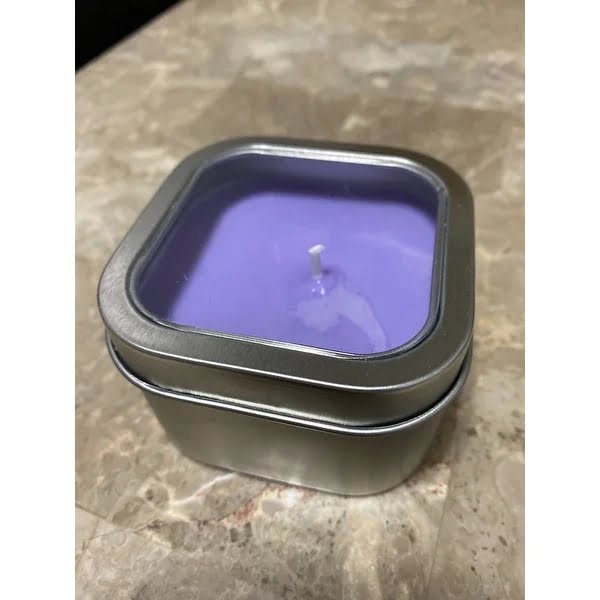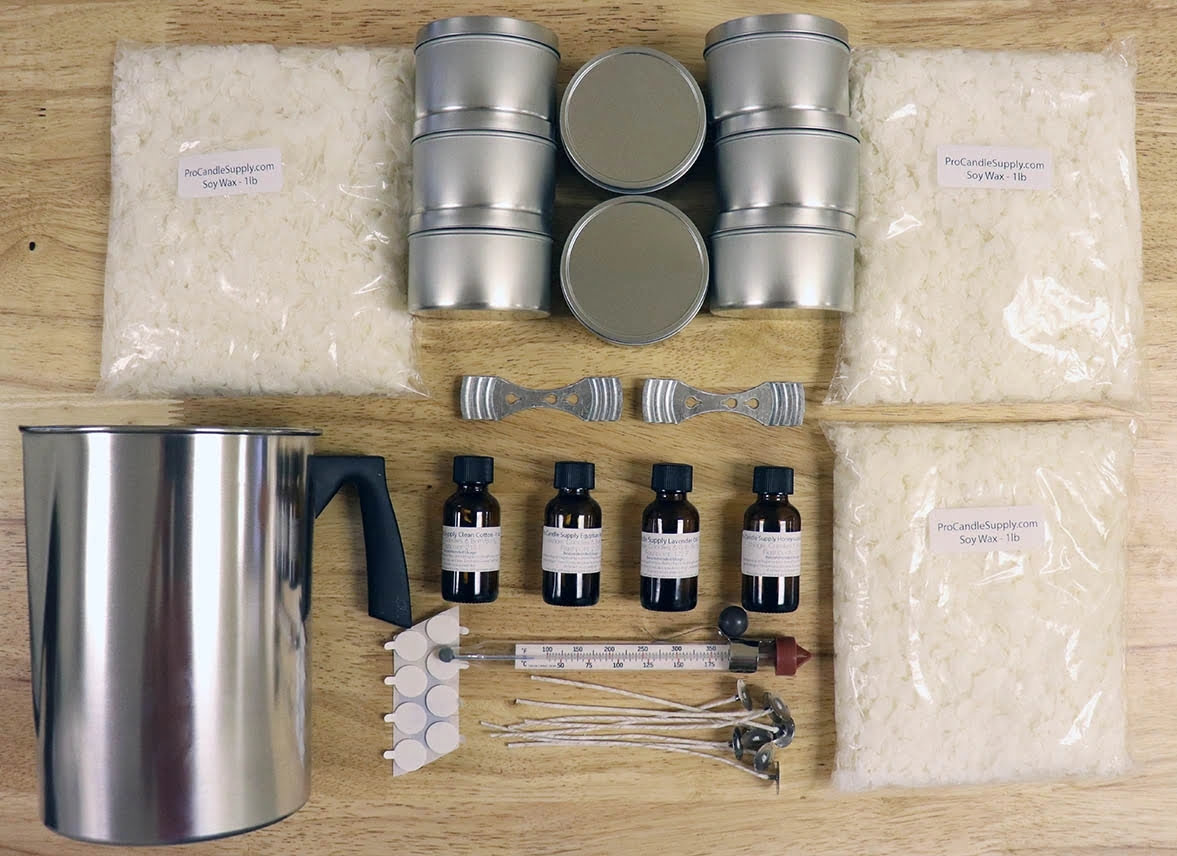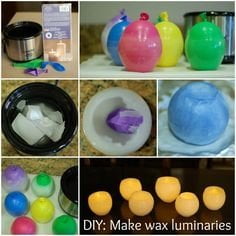Are you new to the world of candle making and wondering, “Can I use urethane molds for candle making?” Urethane molds are a popular choice for candle makers due to their durability and flexibility. In this article, we will dive into the ins and outs of using urethane molds in candle making, including their advantages, disadvantages, tips for usage, common mistakes to avoid, and how to maintain them for longevity.
Urethane molds are versatile tools that can be used in various crafting projects, including candle making. Understanding what urethane molds are and how they are used in this specific craft is crucial for achieving quality results. Whether you are a beginner or an experienced candle maker looking to explore new mold options, this section will provide valuable insights into the world of urethane molds.
In addition to learning about the basics of urethane molds, we will also discuss the different types available on the market and which ones are best suited for candle making. From simple shapes to intricate designs, choosing the right urethane mold can make a significant difference in the outcome of your candles. By understanding the various options available, you can make an informed decision that aligns with your creative vision and business goals.
Advantages and Disadvantages of Using Urethane Molds for Candle Making
Urethane molds are a popular choice for candle making due to their durability and flexibility. One of the advantages of using urethane molds for candle making is their ability to withstand higher temperatures, making them suitable for both hot and cold pour techniques. They are also known for their intricate details and smooth finish, which can result in beautifully crafted candles.
Another advantage of urethane molds is that they have a longer lifespan compared to other mold materials such as silicone or plastic. This means that they can be used repeatedly without losing their shape or quality. Additionally, urethane molds are available in a wide variety of shapes and sizes, allowing candle makers to create unique and customized designs.
Despite these advantages, there are also some disadvantages to using urethane molds for candle making. One potential drawback is the initial cost of purchasing urethane molds, as they tend to be more expensive than other mold options.
Additionally, they require proper care and maintenance to ensure their longevity, which can be time-consuming for some candle makers. Finally, while urethane molds are durable, they may not be as flexible as silicone molds, making it slightly more challenging to remove the finished candles from the mold.
Different Types of Urethane Molds
When it comes to candle making, choosing the right type of urethane mold is crucial for achieving the desired results. Urethane molds are known for their flexibility, durability, and ability to create intricate designs. There are different types of urethane molds available in the market, each with its own unique features that cater to specific candle making needs.
One popular type of urethane mold for candle making is the silicone rubber mold. Silicone rubber molds are known for their high level of detail, making them ideal for creating candles with intricate designs and patterns. They are also flexible and easy to demold, allowing for easy removal of the finished candles without causing any damage.
Another type of urethane mold commonly used in candle making is the polyurethane mold. Polyurethane molds are known for their durability and longevity, making them a great investment for long-term use. They are also heat-resistant, which allows them to withstand the temperature changes that occur during the candle making process.
In addition to silicone rubber and polyurethane molds, there are also latex urethane molds that offer a good balance between flexibility and durability. These molds are suitable for a wide range of candle designs and can be reused multiple times without losing their shape or quality. When choosing the best type of urethane mold for your candle making needs, it’s important to consider factors such as design complexity, durability, ease of use, and budget constraints.
| Type of Urethane Mold | Features |
|---|---|
| Silicone Rubber Mold | High level of detail, flexibility, easy demolding |
| Polyurethane Mold | Durability, heat-resistant |
| Latex Urethane Mold | Flexibility, durability, reusability |
Tips and Tricks for Using Urethane Molds in Candle Making
Properly Preparing the Urethane Mold
Before using a urethane mold for candle making, it is essential to properly prepare the mold. This includes ensuring that the mold is clean and free of any dust or debris that could affect the quality of the candle. Additionally, applying a release agent to the mold can help in easy removal of the finished candle without damaging the mold.
Choosing the Right Wax for Urethane Molds
When using urethane molds for candle making, it is important to choose the right type of wax. Soy wax, paraffin wax, and beeswax are popular choices. Each type of wax has its own melting point and characteristics which can impact how well it will work with a urethane mold.
Proper Cooling and Removal
After pouring the melted wax into the urethane mold, it is crucial to allow the candle to cool completely before attempting to remove it from the mold. Trying to remove a candle from a urethane mold prematurely can lead to distortion or breakage of the finished product. Once cooled, gently flexing and twisting the mold can help release the finished candle without causing any damage.
Using urethane molds for candle making offers several advantages such as durability and flexibility in design but also comes with its own set of considerations. By following these tips and tricks, you can ensure that your experience with using urethane molds for candle making is smooth and successful.
Common Mistakes to Avoid When Using Urethane Molds for Candle Making
When using urethane molds for candle making, there are some common mistakes that should be avoided to ensure that the process goes smoothly and the resulting candles are of high quality. By being aware of these potential pitfalls, you can save yourself time and frustration, and ultimately create better products.
Choosing the Wrong Type of Urethane Mold
One of the most common mistakes when using urethane molds for candle making is selecting the wrong type of mold for your specific needs. There are different types of urethane molds available, such as one-piece or multi-piece molds, and each has its own advantages and disadvantages.
It’s important to carefully consider factors such as the size and shape of the candles you want to make, as well as the complexity of the design, to determine which type of urethane mold will work best for you.
Improper Mold Preparation
Another mistake that can negatively impact your candle making process is failing to properly prepare your urethane molds before use. This includes ensuring that the molds are clean and free from any residue or debris that could affect the appearance of the finished candles. Additionally, applying a suitable mold release agent can help to ensure that the candles can be easily removed from the molds once they have set.
Overheating or Underheating the Urethane Molds
Temperature control is crucial when working with urethane molds for candle making. Overheating or underheating the molds can lead to issues such as warping, uneven surfaces, or difficulty in releasing the candles. It’s important to follow manufacturer guidelines for temperature settings and allow adequate time for cooling before attempting to remove your candles from the molds.
By being mindful of these common mistakes and taking proactive measures to avoid them, you can make the most out of using urethane molds for candle making and achieve consistent, high-quality results every time.
Maintaining and Cleaning Urethane Molds for Longevity
When it comes to using urethane molds for candle making, proper maintenance and cleaning are essential to ensure the longevity of your molds. Follow these tips to keep your urethane molds in top condition for years to come:
1. Regular cleaning: After each use, make sure to clean your urethane molds thoroughly to remove any residue from the candles. Use warm, soapy water and a soft sponge to gently clean the surface of the mold. Avoid using harsh chemicals or abrasive materials that can damage the mold.
2. Inspect for damage: Before storing your urethane molds, inspect them for any signs of damage such as cracks or tears. If you notice any issues, address them immediately to prevent further damage during storage or future use.
3. Proper storage: Store your urethane molds in a cool, dry place away from direct sunlight and extreme temperatures. Consider using a protective case or wrapping them in a soft cloth to prevent dust buildup and protect them from potential damage.
By following these simple maintenance and cleaning practices, you can extend the lifespan of your urethane molds and continue creating beautiful candles for years to come.
Remember that taking care of your urethane molds is crucial for maintaining their quality and effectiveness in producing high-quality candles. With proper care, you can enjoy the benefits of using urethane molds for candle making for a long time.
In addition to maintenance, it’s important to carefully consider which type of urethane mold is best suited for your specific candle making needs. Experiment with different types and sizes of molds until you find the perfect fit for your creative vision and business goals.
Exploring Alternative Molds for Candle Making
When it comes to candle making, one of the key decisions to consider is the type of mold to use. Urethane molds are a popular choice for many candle makers, but it’s important to explore alternative options as well. By comparing urethane molds to other types of molds, you can determine which option is best suited for your specific needs and preferences.
One alternative to urethane molds is silicone molds. Silicone molds are known for their flexibility and durability, making them a great option for candle making. They are also easy to clean and maintain, which can save time and effort in the long run. Additionally, silicone molds come in a variety of shapes and sizes, allowing for endless creativity when crafting candles.
Another alternative worth considering is metal molds. Metal molds are known for their sturdiness and ability to withstand high temperatures, making them suitable for both paraffin and soy wax candles. However, one drawback of using metal molds is that they require extra care when handling due to their heat-conducting properties.
Lastly, plastic molds are another alternative that can be used for candle making. Plastic molds are lightweight and generally more affordable than other options. However, they may not be as durable as silicone or metal molds, and they may not provide the same level of detail in the finished candle.
Ins and Outs of Choosing the Right Urethane Mold for Your Candle Making Business
In conclusion, urethane molds can be a great option for candle making due to their flexibility, durability, and the detailed designs they can produce. Understanding how to properly use urethane molds in candle making is important to ensure successful results. It’s crucial to weigh the advantages and disadvantages of using urethane molds, as well as consider the different types available and which one would best suit your candle making needs.
When using urethane molds for candle making, it’s important to keep in mind some tips and tricks to achieve the best outcomes. Avoiding common mistakes and properly maintaining and cleaning the molds will contribute to their longevity and quality of the candles produced. Additionally, exploring alternative mold options and comparing them to urethane molds can help you make an informed decision on what type of mold is best suited for your candle making business.
Choosing the right urethane mold for your candle making business involves considering factors such as design intricacy, cost-effectiveness, and overall production efficiency. By carefully evaluating these aspects and taking into account your specific needs as a candle maker, you can make an informed decision on whether urethane molds are the right choice for your business. Overall, with proper care and consideration, urethane molds can be a valuable tool in the candle making process.
Frequently Asked Questions
What Material Is Best for Candle Molds?
The best material for candle molds is usually silicone or metal. Silicone molds are flexible, making it easy to remove the candle once it has set, and they are also durable and reusable. Metal molds, such as aluminum or tin, are great for conducting heat evenly which can help the candle to set properly.
What Can I Use as a Candle Mold?
When in need of a candle mold, you can use a wide range of everyday items. For example, empty toilet paper rolls can be used for creating small pillar candles, while glass jars or containers can be used for container candles.
You can also get creative and use items like candy molds, plastic containers, or even fruit rinds as unique candle molds.
What Material Is Used for Candle Mould?
Candle molds are typically made from materials like silicone, metal (such as aluminum or tin), or plastic. Each material has its own advantages – silicone is flexible and durable, metal conducts heat well and is long-lasting, while plastic is cost-effective and easily available.
The choice of material will depend on the type of candle being made and personal preference for ease of use and durability.

Welcome to my candle making blog! In this blog, I will be sharing my tips and tricks for making candles. I will also be sharing some of my favorite recipes.





